Museo de Historia de Seúl (서울역사박물관)
10.8Km 2023-08-11
Saemunan-ro 55, Jongno-gu, Seúl
El Museo de Historia de Seúl refleja en forma ordenada la historia y cultura de la capital de Corea. Aquí podrá conocer y aprender sobre Seúl e incrementar su capacidad de entendimiento acerca de ella. En este museo observará los vestigios históricos y culturales de Seúl, desde la era prehistórica a los días modernos. Muchas de las reliquias de la dinastía Joseon fueron donadas durante la Campaña de Donación de Reliquias. La cantidad de tesoros históricos que se expone aumenta día a día.
En mayo de 2002 el museo fue renovado, 17 años después de su apertura, por lo que ostenta unas instalaciones de lo más modernas. Si lleva equipaje pesado, solicite que se lo guarden en el guardarropa que se encuentra en la planta baja y diríjase al tercer piso, en donde se encuentran las salas principales de exposición. Allí podrá ver el paisaje de lo que era Seúl durante la dinastía Joseon, como así también el ambiente de la vida cotidiana de la gente de esta ciudad. También podrá observar las piezas en exposición en el museo cibernético por Internet. En el primer piso se encuentran la mayoría de las instalaciones de comodidad, la sala de cuidado de niños, una tienda comercial, una tienda de suvenires, asientos para descansar, etc.
Nuwa [Korea Quality] / 누와 [한국관광 품질인증/Korea Quality]
10.8Km 2021-03-29
3-1, Pirundae-ro 5na-gil, Jongno-gu, Seoul
This hanok (traditional Korean house) is located deep in the Seochon Village, west of Seoul’s Gyeongbokgung Palace. Its tasteful renovation of a small 33 m2 hanok made it highly popular among the younger guests. The courtyard has a low maple tree and tastefully arranged stones, while the hanok is capable of accommodating up to 2 persons.
This L-shaped hanok has a full window wall facing the living room, which is furnished with a low walnut table and a bathtub. Visitors can enjoy premium tea at the table. The bathtub, which is connected to the table at one end, can be used mainly for a foot bath with bath salts that assist circulation. There is also a restroom in the building.
Nuwa’s bedroom has a circular window, much like the full moon, with a view of the garden and the fringes of the Inwangsan Mountain.
Hotel Elle Inn (엘르인호텔)
10.8Km 2025-07-17
24, Hangang-daero 71-gil, Yongsan-gu, Seoul
02-792-8700
Legación Rusa de Corea (서울 구 러시아공사관)
10.8Km 2022-03-04
Jeongdong-gil 21-18, Jung-gu, Seúl
Of one book and stay [Korea Quality] / 일독일박 [한국관광 품질인증/Korea Quality]
10.8Km 2021-03-29
11-1, Pirundae-ro 3-gil, Jongno-gu, Seoul
This hanok (traditional Korean house) is located in Seochon Village near Gyeongbokgung Palace. It is a modern C-shaped hanok centered around the inner courtyard, which is the first thing that the guests see after entering through the gate. While it is not expansive, white pebbles and a foot bath make this hanok a unique one. One can enjoy a foot bath while sitting on the porch.
The bedroom, which is located beyond the living room, is furnished with a queen-sized bed. Opening the screen doors brings one to the view of the kitchen area beyond the inner courtyard. A large table, plush sofa, and a small bookcase make the space ideal for books and discussions. Climbing the wooden ladder to the side of the kitchen brings one to the attic, which also doubles as a Korean-style room with a skylight. The kitchen is furnished with a refrigerator, microwave oven, gas stove, electric kettle, toaster, pots, utensils, wine glasses, and bottled water. There is a restroom with a bathtub. The standard occupancy of the house is 4 people.
Museo Conmemorativo Appenzeller Noble (배재학당역사박물관)
10.8Km 2022-09-27
Seosomun-ro 11-gil 19, Jung-gu, Seúl
El Museo Conmemorativo Appenzeller Noble abrió en 2008 en el Instituto Pai Chai, una institución educacional de estilo occidental construida en 1916. El edificio del museo está designado como como Monumento de Seúl. Con exposiciones permanentes dispuestas dinámicamente, exposiciones especiales anuales y conferencias especiales, el museo ofrece una experiencia de aprendizaje única para los visitantes y personas que tengan interés en la historia de la educación en Corea.
Teobangnae (터방내)
10.8Km 2021-03-30
101-7, Heukseok-ro, Dongjak-gu, Seoul
+82-2-813-4434
It is an old store that opened in 1983. This cafe is located in Dongjak-gu, Seoul. The representative menu is coffee.
NUHADANG [Korea Quality] / 누하당 [한국관광 품질인증]
10.8Km 2020-09-10
49-7, Pirundae-ro, Jongno-gu, Seoul
010-9692-1330
Guesthouse Nuha is a ‘hanok’ or traditional Korean house consisting of four guestrooms located in Nuha-dong, Seochon (west of Gyeongbokgung Palace, Jongno, Seoul) where many Confucian scholars and artists lived during the Joseon Dynasty.
Exuding a refined atmosphere, Guesthouse Nuha is very popular among not only domestic visitors but also foreign tourists who want to experience the flavor of Korea in a cozy hanok. All four guestrooms (An-bang, Sarang-bang, Geul-bang, and Byeol-dang) are covered with eco-friendly hanji (traditional Korean paper handmade from mulberry tree) wallpaper, and are equipped with a thick cotton-wool comforter and pillows imbued with the scent of Hinoki cypress tree to help guests relieve their fatigue.
Breakfast is served free of charge. Guests can also experience traditional Korean culture here, such as playing a Korean musical instrument (janggu or double-headed drum), playing a game of yut in the yard, or wearing hanbok (traditional Korean clothes). Although a local bus service passes through the village, it is highly recommended to take a quiet leisurely around the area.
Primera Iglesia Metodista de Jeong-dong (정동교회)
10.8Km 2022-03-31
Jeongdong-gil 46, Jung-gu, Seúl
La Iglesia de Jeong-dong de Seúl, fundada en 1898, fue la primera iglesia protestante en Corea. La iglesia tenía 380㎡ cuando se construyó, pero como se añadieron edificios en cada ala en 1926, hoy en día esta iglesia ocupa una extensión de 579 ㎡. La Iglesia de Jeong-dong ha sido designada como Sitio Histórico, mostrando una arquitectura gótica al estilo norteamericano. Dentro del terreno de la iglesia, se hallan un busto del fundador, el pastor Appenzeller, y un monumento en conmemoración del 50º aniversario de la fundación. En 1889, la iglesia apareció en una revista mensual llamada Church por celebrar la primera reunión de estudios de la Biblia en Corea, y también era una de las iglesias que lideraban las actividades misioneras. La Iglesia de Jeong-dong está situada en el centro de la hermosa calle Jeong-dong de Seúl, una zona que presenta un paisaje espléndido en otoño cuando las hojas se caen de los árboles. En sus inmediaciones se encuentran el Teatro Jeongdong, el palacio Deoksugung y el Museo de Arte de Seúl, por lo que esta área se convierte en un lugar perfecto para el turismo.
Korea Samgyetang (고려삼계탕)
10.8Km 2025-05-19
1, Seosomun-ro 11-gil, Jung-gu, Seoul

![Nuwa [Korea Quality] / 누와 [한국관광 품질인증/Korea Quality]](http://tong.visitkorea.or.kr/cms/resource/07/2707607_image2_1.jpg)
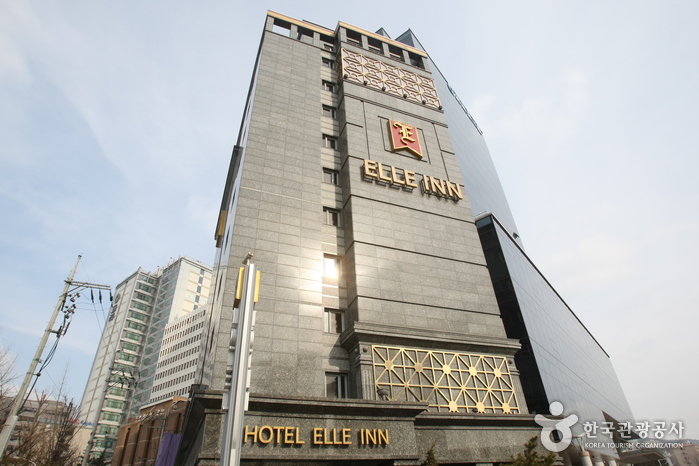
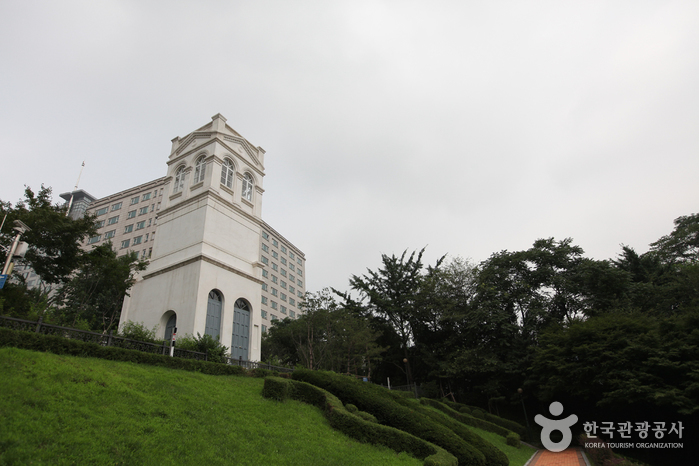
![Of one book and stay [Korea Quality] / 일독일박 [한국관광 품질인증/Korea Quality]](http://tong.visitkorea.or.kr/cms/resource/43/2707643_image2_1.jpg)
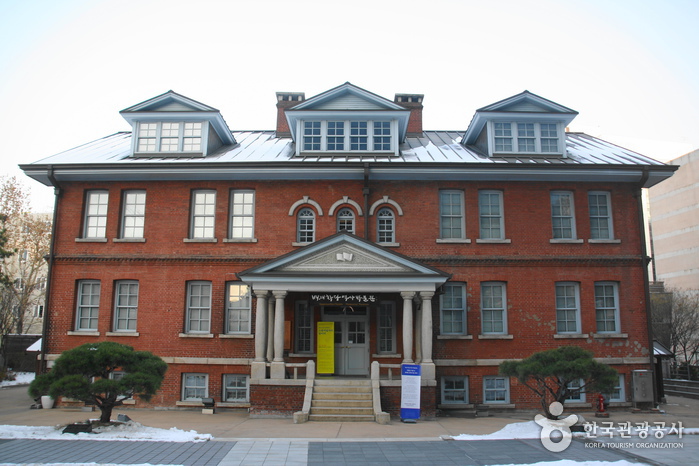
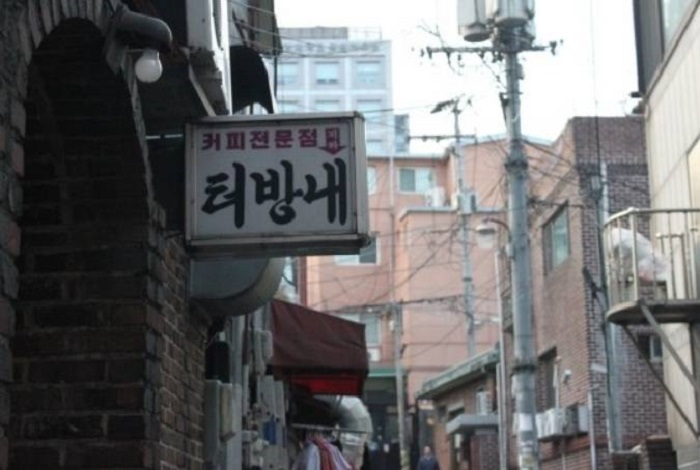
![NUHADANG [Korea Quality] / 누하당 [한국관광 품질인증]](http://tong.visitkorea.or.kr/cms/resource/58/2532358_image2_1.jpg)
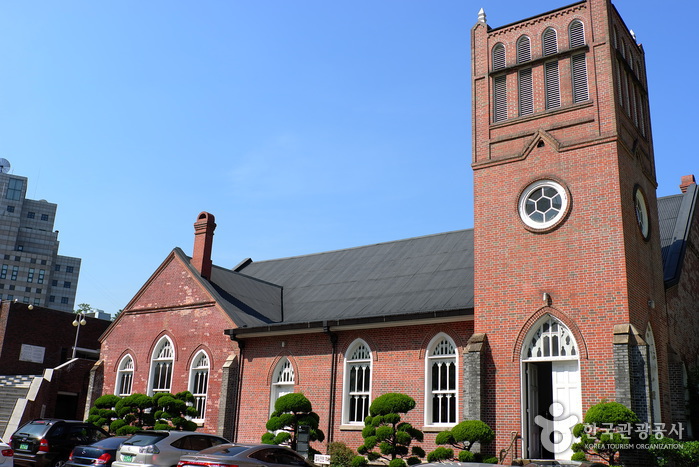
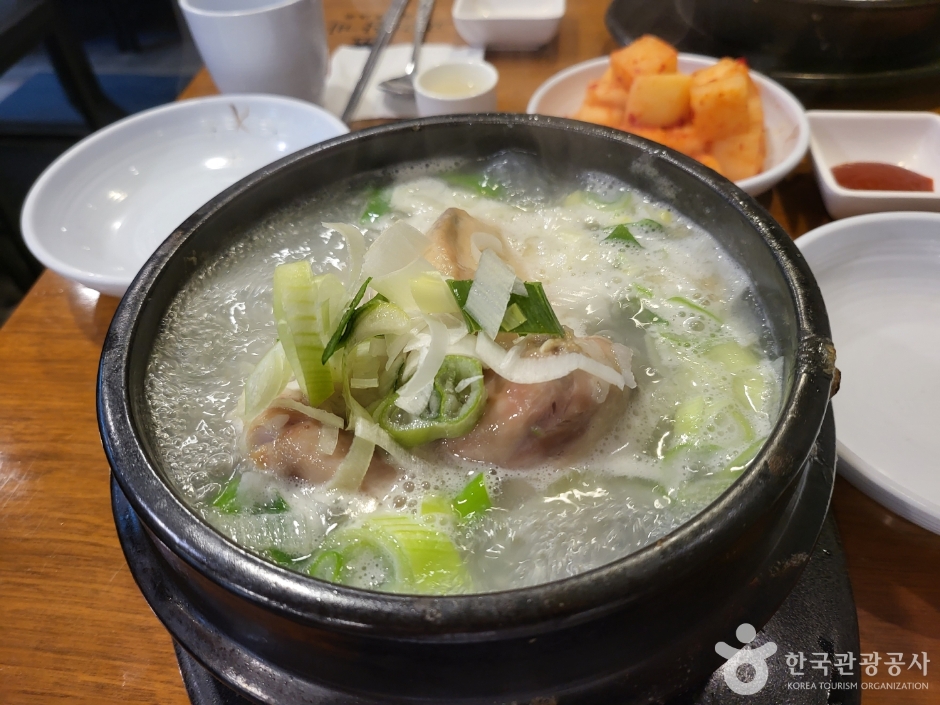
 Español
Español
 한국어
한국어 English
English 日本語
日本語 中文(简体)
中文(简体) Deutsch
Deutsch Français
Français Русский
Русский